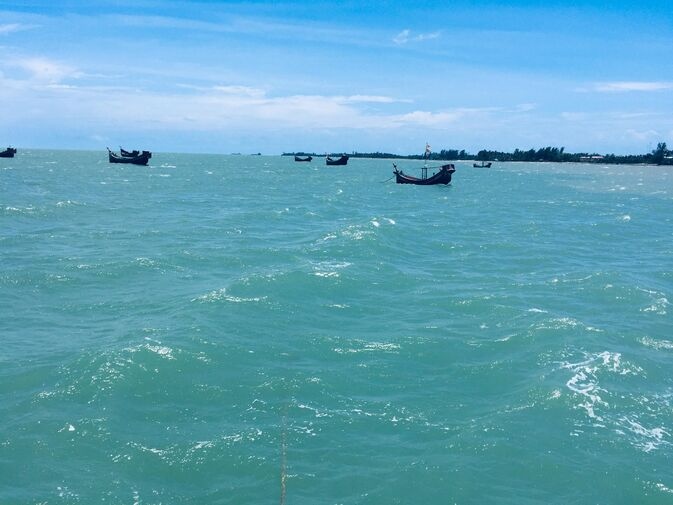Once teeming with tourists almost year-round, St. Martin’s Island has undergone a remarkable transformation this season. Due to government restrictions, tourist access was limited to just two months, from December 1 to January 31, before a complete travel ban took effect on February 1. As a result, the island’s landscape has embraced a newfound serenity, allowing nature to flourish.
The once-crowded beaches now host vibrant colonies of red crabs, while the number of seashells and mollusks has increased significantly. Keora trees are spreading their branches freely, and various fish species can be seen swimming near the shore. Environmentalists view these changes as a positive step toward restoring the island’s fragile ecosystem.
Previously, tourists were allowed to visit St. Martin’s until March 31 each year. This season, however, only 2,000 tourists per day were permitted between December and January, helping to reduce human impact on the island’s environment.
According to Zamir Uddin, Deputy Director of the Department of Environment’s Cox’s Bazar office, the Ministry of Environment, Forest, and Climate Change has undertaken several initiatives to restore the island’s ecological balance.
Two waste removal efforts were carried out in February, eliminating nearly 90% of accumulated trash, mostly plastic wrappers and polythene. Measures have also been taken to prevent coral and seaweed extraction.
Local businessman Zobair, a resident of St. Martin’s, acknowledged that while the tourism business suffered this year, preserving the island’s existence remains the top priority. “Seeing seashells scattered across the beach in the morning feels refreshing,” he said.
Nazir Hossain, a local union council member, noted that new mangrove forests are taking root along the rocky southern shores of the island, particularly in the Diyar Matha area. “Since there are fewer people, the trees are growing rapidly. Efforts are being made to prevent locals from cutting them down,” he added.
Dr. Shafiqul Rahman, Assistant Project Director at NECOM, an NGO working on turtle conservation, emphasized that limiting tourism has significantly improved the island’s ecosystem. “Strict monitoring has ensured that no corals were extracted this season,” he said. Research indicates that St. Martin’s Island is home to 1,076 species of biodiversity, including corals, seaweed, sea turtles, mollusks, fish, seabirds, and marine mammals. The island’s sandy shores are also a critical nesting ground for the endangered olive ridley turtle. In recent years, unregulated infrastructure development, mass tourism, and pollution have put the island’s delicate environment at risk.
With nature reclaiming its space, this season has shown that a sustainable approach to tourism may be the key to preserving St. Martin’s unique ecological treasures.
By Abdur Rashid Manik
File Photo









